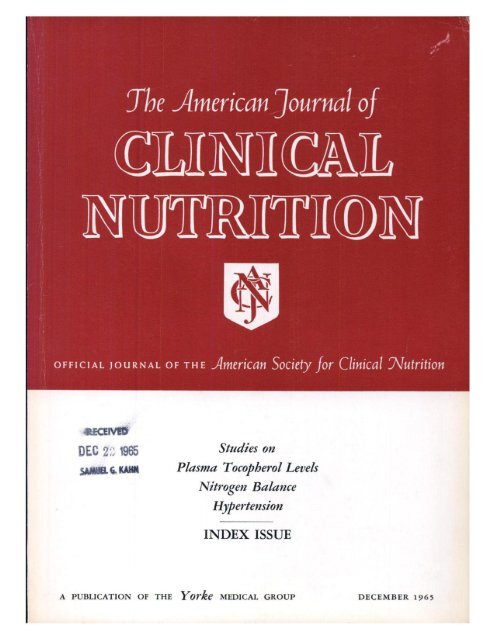美国成年人植酸盐和草酸盐摄入量增加,钙摄入量下降和骨骼健康:1999-2023,一项连续横断面分析。
IF 6.5
1区 医学
Q1 NUTRITION & DIETETICS
引用次数: 0
摘要
背景:美国成人饮食模式、钙生物利用度和骨骼健康之间的关系尚不清楚。目的:研究膳食钙、植酸盐和草酸盐摄入量与钙生物利用度和骨健康指标(包括骨密度、骨质疏松症患病率和骨折发生率)之间的关系。方法:采用全国健康与营养调查(NHANES) 1999-2023年的数据,对18-85岁的成年人进行连续横断面分析。在NHANES实验室测定血清钙和骨密度;饮食摄入、骨质疏松和骨折史均为自述。主要暴露包括饮食中的钙、植酸盐和草酸盐;结果包括估计的钙吸收、骨密度、骨质疏松和骨折的变化。调查加权回归模型用于评估调查周期的时间变化和关联。结果:2017-2020年,平均植酸盐摄入量显著高于1999-2000年(834.1±26.2 mg/d vs. 593.5±23.2 mg/d),草酸盐摄入量从241.5±6.6 mg/d增加到280.5±6.6 mg/d。钙摄入量在2009-2010年达到峰值1025.3±9.7 mg/d,但在2021-2023年降至899.9±15.7 mg/d。低钙摄入和高植酸和草酸水平的时期与钙吸收减少相对应。作为生物可利用钙的主要来源,牛奶消费量从1999-2000年的0.95±0.03杯当量/天下降到2017-2020年的0.56±0.02杯当量/天。血清钙浓度由2009-2010年的9.46±0.02 mg/dL降至2017-2020年的9.29±0.01 mg/dL。2009-2010年至2017-2020年间,股骨骨密度从0.982±0.004 g/cm2下降至0.934±0.005 g/cm2,股骨颈骨密度从0.849±0.003 g/cm2下降至0.775±0.005 g/cm2。与2009-2010年相比,2017-2020年骨质疏松症患病率增加,髋部、手腕和脊柱骨折的报道频率更高。结论:在美国成年人中,较高的植酸盐和草酸盐饮食以及较低的钙和乳制品摄入量可能导致钙的生物利用度降低和不利的骨骼健康结果。本文章由计算机程序翻译,如有差异,请以英文原文为准。
Rising phytate and oxalate intake, declining calcium intake, and bone health in United States adults: 1999–2023, a serial cross-sectional analysis
Background
The relationship among dietary patterns, calcium bioavailability, and bone health in United States adults remains unclear.
Objectives
This study aims to examine associations among dietary calcium, phytate, and oxalate intake and calcium bioavailability and bone health indicators, including bone mineral density (BMD), osteoporosis prevalence, and fracture incidence.
Methods
A serial cross-sectional analysis was conducted using National Health and Nutrition Examination Survey (NHANES) data (1999–2023) for adults aged 18–85. Serum calcium and BMD were measured in NHANES laboratories; dietary intake, osteoporosis, and fracture history were self-reported. Primary exposures included dietary calcium, phytate, and oxalate; outcomes included estimated calcium absorption, and changes in BMD, osteoporosis, and fractures. Survey-weighted regression models were used to assess temporal changes and associations across survey cycles.
Results
In 2017–2020, mean phytate intake was significantly higher than in 1999–2000 (834.1 ± 26.2 mg/d compared with 593.5±23.2 mg/d), and oxalate intake increased from 241.5 ± 6.6 mg/d to 280.5 ± 6.6 mg/d. Calcium intake peaked at 1025.3 ± 9.7 mg/d in 2009–2010 but lowered to 899.9 ± 15.7 mg/d by 2021–2023. Periods of lower calcium intake and higher phytate and oxalate concentrations corresponded with reduced calcium absorption. Milk consumption, a primary source of bioavailable calcium, decreased from 0.95 ± 0.03 cup-equivalents/d in 1999–2000 to 0.56 ± 0.02 in 2017–2020. Serum calcium concentrations lowered from 9.46 ± 0.02 mg/dL in 2009–2010 to 9.29 ± 0.01 mg/dL in 2017–2020. BMD at the femur dropped from 0.982 ± 0.004 to 0.934 ± 0.005 g/cm2, and at the femoral neck from 0.849 ± 0.003 to 0.775 ± 0.005 g/cm2 between 2009–2010 and 2017–2020. Osteoporosis prevalence increased, and fractures at the hip, wrist, and spine were more frequently reported in 2017–2020 compared with those in 2009–2010.
Conclusions
Diets with greater phytate and oxalate and lower calcium and dairy intake may contribute to reduced calcium bioavailability and unfavorable bone health outcomes among United States adults.
求助全文
通过发布文献求助,成功后即可免费获取论文全文。
去求助
来源期刊
CiteScore
12.40
自引率
4.20%
发文量
332
审稿时长
38 days
期刊介绍:
American Journal of Clinical Nutrition is recognized as the most highly rated peer-reviewed, primary research journal in nutrition and dietetics.It focuses on publishing the latest research on various topics in nutrition, including but not limited to obesity, vitamins and minerals, nutrition and disease, and energy metabolism.
Purpose:
The purpose of AJCN is to:
Publish original research studies relevant to human and clinical nutrition.
Consider well-controlled clinical studies describing scientific mechanisms, efficacy, and safety of dietary interventions in the context of disease prevention or health benefits.
Encourage public health and epidemiologic studies relevant to human nutrition.
Promote innovative investigations of nutritional questions employing epigenetic, genomic, proteomic, and metabolomic approaches.
Include solicited editorials, book reviews, solicited or unsolicited review articles, invited controversy position papers, and letters to the Editor related to prior AJCN articles.
Peer Review Process:
All submitted material with scientific content undergoes peer review by the Editors or their designees before acceptance for publication.

 求助内容:
求助内容: 应助结果提醒方式:
应助结果提醒方式:


